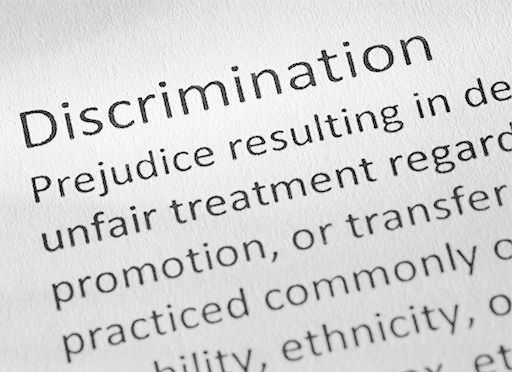Billie Jean King captures her life, career and the times that shaped her, on and off the court.

Hard Lessons and Pioneering Triumphs
In this New York Times bestseller and Washington Post Best Book of the Year, Billie Jean King – winner of 39 Grand Slam tennis titles, the first female athlete to receive the Presidential Medal of Freedom, co-founder of World TeamTennis, and founder of the Women’s Tennis Association (1973) and the Women’s Sports Foundation (1974) – tells her life story with the collaboration of Johnette Howard and Maryanne Vollers.
Autobiographies featuring multiple authors always raise questions of whose voice the reader experiences. But Howard has written of women tennis players before and Vollers movingly covered a North Korean’s struggles for freedom. Both are accustomed to telling other peoples’ stories while staying out of the way. King is a dominant personality, to say the least, and she shines through in this text. Readers can assume this is her voice, however honed.
Inequalities
King’s themes lay bare the inequalities facing women athletes. She laments that in the 1950s – when she was Billie Jean Moffitt – no one encouraged women to be athletes.
In 1956, women tennis players had fewer tournaments, with prize money a fraction of men’s. The first Black tennis player to break the segregation barrier was Althea Gibson, who played the US National Championship in 1950. When Moffitt was 13, she saw Gibson play. She now cites Gibson as exemplifying what she aspired to become.
There was this gap between what I thought I was capable of and the world as it was. I saw that gulf clearly. I was less sure how to breach it.Billie Jean King
When Moffitt turned 18, she beat favorite Margaret Smith Court at Wimbledon. They would be rivals for decades. As an amateur, though, Moffitt played tennis only part-time while working menial jobs to get by. She met her future husband, Larry King in college, and in October 1963, she suffered a car accident injury that would trouble her for the rest of her life. She and King married in 1965. A year later, Billie Jean King beat Margaret Court. She was learning, King asserts, to raise her game when she faced higher stress.
Professional
Because of the old-fashioned purists who insisted that women’s tennis remain an amateur sport, King, one of the world’s best players, had to save every penny to survive.
There was hand-wringing that money would bleed the honor out of the sport, as if we could eat or survive on ‘honor’.Billie Jean King
In 1968, she earned her first professional fees in the new National Tennis League. King relates with anger that male players earned eight times what tournaments paid women. King’s push to professionalize women’s tennis sometimes annoyed her peers. She details thriving on their scorn.
Tennis Entrepreneurs
Determined to foment change – and make money – Billie Jean and Larry King founded womenSports magazine, World TeamTennis and the Women’s Sports Foundation.
The rejections pushed us to take control of our future. I was learning that you can’t build a movement without incurring opposition…some of us were feeling empowered for the first time in our lives. Billie Jean King
In 1971, new regulations banned cigarette advertising on TV, so Philip Morris had money to invest in women’s tennis. Strong corporate backing put women’s tennis on the major television networks. The tour spawned other ventures, and King made sponsorship deals with Keds and Adidas.
Women’s Rights Activist
King states with pride that she became the first female athlete to earn $100,000 in a year – all while Congress was debating the Equal Rights Amendment, which would protect women from gender discrimination. King urged feminist leader Gloria Steinem to use female athletes to publicize equality, but was rebuffed. King believes feminists took too intellectual a stand just as female athletes were proving women’s equality to men.
When King became pregnant in 1971, her husband supported her decision to have an abortion. He shared the story with Ms. magazine, King received hate mail, and her choice left her mother broken-hearted. By 1972, King discloses, she had a female lover, hairdresser Marilyn Barnett.
Hardly anybody then was saying, You’re gay, so what?, and handing you a rainbow. LGBTQ+ people were beaten up, raped, arrested and even killed.Billie Jean King
Because King built her reputation by breaking boundaries and telling the truth, she reports that she felt like a fraud for hiding her sexuality. However, she believed coming out would jeopardize the women’s tour, so she spent years denying she was gay.
Bobby Riggs
In 1973, Bobby Riggs, a former Wimbledon champ who had turned pro in the 1940s, pestered King into playing a match against him for high stakes. He baited King, saying women weren’t entitled to the same prize money as men.
Throwing the match couldn’t be further from the truth. Losing to her was the most disappointing, disheartening experience of my life. Bobby Riggs
King celebrates her ruthlessness, explaining how she made Riggs struggle for every point. More than 90 million people worldwide watched King win in five grueling sets. King seems to have few pure satisfactions, and she complains that rumors of Riggs throwing the match endured for years.
A Lover’s Lawsuit
Playboy asked if King were gay, and she denied she was. Even after falling in love with her life partner Ilana Kloss in 1979, King says she feared being outed and losing the endorsements she relied on for retirement. In April 1981, Barnett sued King for their Malibu house and “galimony,” changing King’s life forever.
While people saw me joust fearlessly in public and even called me a militant, they had little idea how much I privately struggled for clarity, for honesty. Billie Jean King
King writes with candor of her breakdown, which she attributes to the stress of lying about her sexuality. In 1995, her doctors diagnosed a binge-eating disorder, and King went into rehab. She believes she wanted so much to please everyone else that she neglected her own safety and happiness. King came out to her parents, and experienced something she’d rarely felt: relief.
Strength
King always assumed a strident public persona, made even more combative by being right most of the time and belittled for it. She remains as assertive as ever, and thus, her confessions of doubt and of self-loathing for concealing her sexuality prove extraordinarily moving. King offers little succor to those who irked her, and pours familiar scorn on her betrayers. Yet the worthwhile core and most attractive aspect of King’s telling of her own story is not her tennis achievements, though they are formidable. King offers, perhaps unintentionally, an exemplary tale of hard-earned success and its discontents as faced by the women of her generation. Thus, she provides profound lessons for men and women of the generations after her.
Other books by Billie Jean King include Billie Jean, co-authored with Frank Deford; Pressure Is a Privilege, co-authored with Christine Brennan; We Have Come a Long Way, co-authored with Cynthia Starr; and Billie Jean King’s Secrets of Winning Tennis. Johnette Howard also wrote The Rivals: Chris Evert vs. Martina Navratilova, Their Epic Duels and Extraordinary Friendship. Maryanne Vollers co-authored In Order to Live: A North Korean Girl’s Journey to Freedom and wrote Lone Wolf: Eric Rudolph and the Legacy of American Terror.











